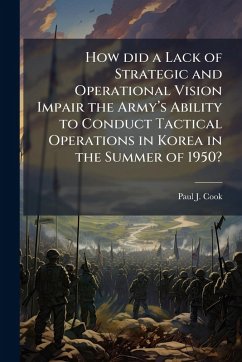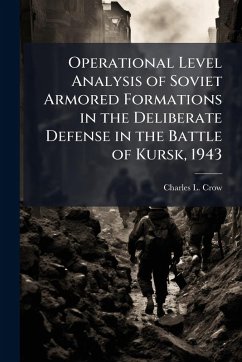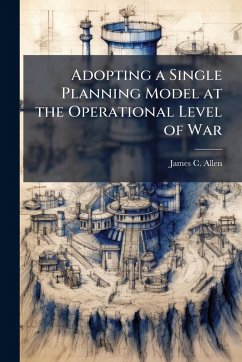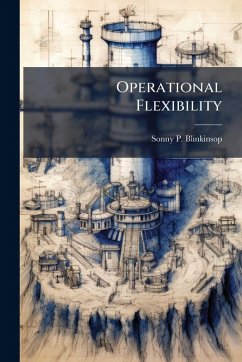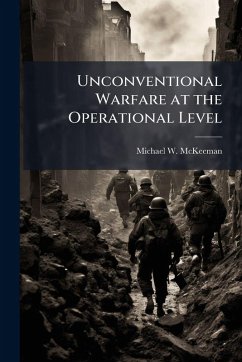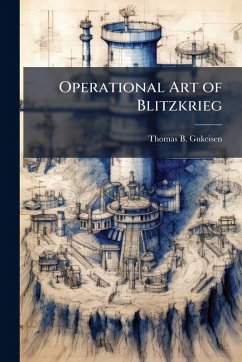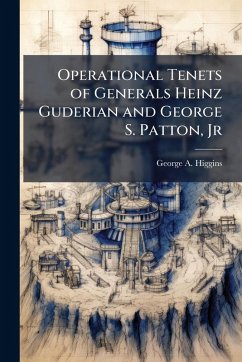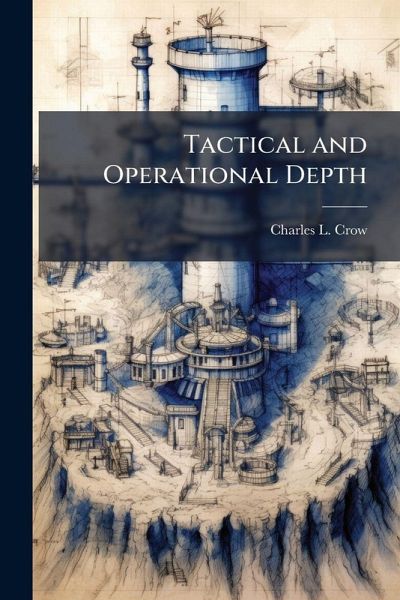
Tactical and Operational Depth
Versandkostenfrei!
Versandfertig in über 4 Wochen
14,99 €
inkl. MwSt.
Weitere Ausgaben:

PAYBACK Punkte
7 °P sammeln!
This study analyzes and defines tactical and operational depth. Simply stated, tactical depth is defined as the area occupied by defending units whose continued occupation maintains the integrity of the defense and denies the attacker the opportunity to destroy the mass of defending forces by maneuver, while operational depth is the area in which maneuver is achieved and if gained by the attacker provides the opportunity to destroy the defender without engaging the majority of defenses. Historical analyzes based on the study of the Battle of Gazal, battle for the Kerch peninsula, and the Battl...
This study analyzes and defines tactical and operational depth. Simply stated, tactical depth is defined as the area occupied by defending units whose continued occupation maintains the integrity of the defense and denies the attacker the opportunity to destroy the mass of defending forces by maneuver, while operational depth is the area in which maneuver is achieved and if gained by the attacker provides the opportunity to destroy the defender without engaging the majority of defenses. Historical analyzes based on the study of the Battle of Gazal, battle for the Kerch peninsula, and the Battle of Kursk revealed that tactical and operational depth are not related to the size of units or any specific depth, but are dependent on missions, objectives, employment of units, locations of reserves, and the perspective in which these are viewed. Units occupying tactical depth in the battles studied range in size from brigade to army. In the term of size, tactical depth varied from five to sixty kilometers. Units defending in the tactical depth had missions related to denying the attacker the ability to maneuver, while units positioned in the operational depth were oriented on destroying units that had penetrated the tactical depth. The study concludes that tactical and operational depth can be summed up in two words, denial and opportunity. The importance in understanding the difference in the two depths lies in the fact that when the attacker crosses the threshold between tactical and operational depth, a decision point has been reached. The attacker must decide how to respond to the opportunity presented to him, while the defender must adequately respond or face total destruction. This work has been selected by scholars as being culturally important, and is part of the knowledge base of civilization as we know it. This work was reproduced from the original artifact, and remains as true to the original work as possible. Therefore, you will see the original copyright references, library stamps (as most of these works have been housed in our most important libraries around the world), and other notations in the work. This work is in the public domain in the United States of America, and possibly other nations. Within the United States, you may freely copy and distribute this work, as no entity (individual or corporate) has a copyright on the body of the work. As a reproduction of a historical artifact, this work may contain missing or blurred pages, poor pictures, errant marks, etc. Scholars believe, and we concur, that this work is important enough to be preserved, reproduced, and made generally available to the public. We appreciate your support of the preservation process, and thank you for being an important part of keeping this knowledge alive and relevant.



